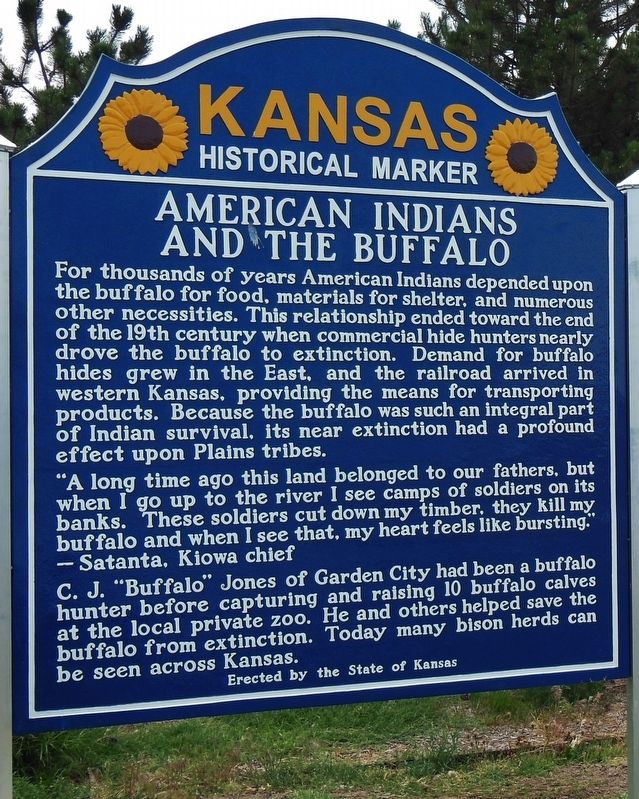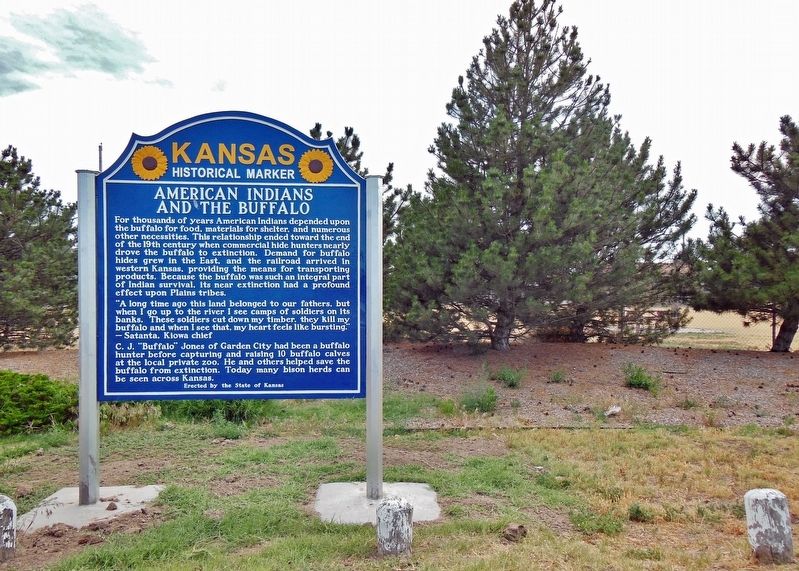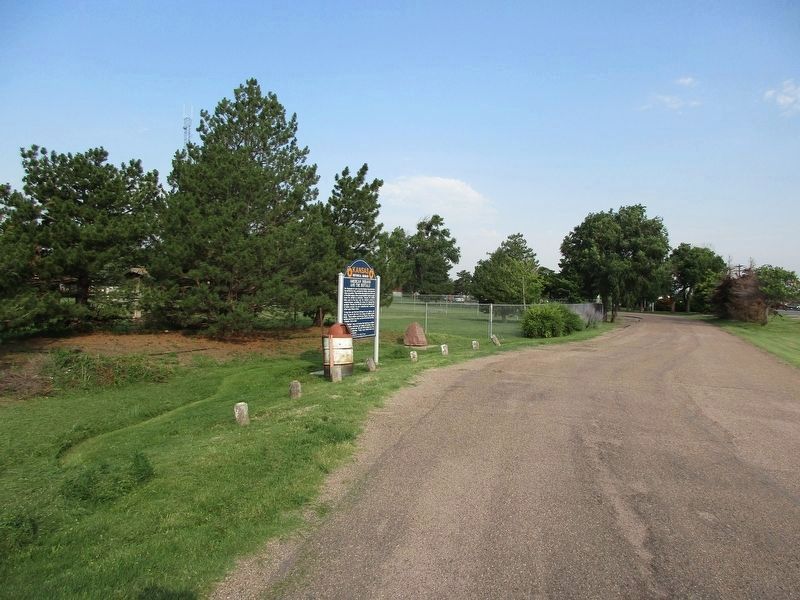Garden City in Finney County, Kansas — The American Midwest (Upper Plains)
American Indians and the Buffalo
For thousands of years American Indians depended upon the buffalo for food, materials for shelter, and numerous other necessities. This relationship ended toward the end of the 19th century when commercial hide hunters nearly drove the buffalo to extinction. Demand for buffalo hides grew in the East, and the railroad arrived in western Kansas, providing the means for transporting products. Because the buffalo was such an integral part of Indian survival, its near extinction had a profound effect upon Plains tribes.
”A long time ago this land belonged to our fathers, but when I go up to the river I see camps of soldiers on its banks. These soldiers cut down my timber, they kill my buffalo and when I see that, my heart feels like bursting.”
—Satanta, Kiowa chief
C. J. “Buffalo” Jones of Garden City had been a buffalo hunter before capturing and raising 10 buffalo calves at the local private zoo. He and others helped save the buffalo from extinction. Today many bison herds can be seen across Kansas.
Erected by State of Kansas. (Marker Number 80.)
Topics and series. This historical marker is listed in these topic lists: Animals • Native Americans • Railroads & Streetcars • Settlements & Settlers. In addition, it is included in the Kansas Historical Society series list.
Location. 37° 57.66′ N, 100° 50.777′ W. Marker is in Garden City, Kansas, in Finney County. Marker can be reached from East Fulton Street (Business U.S. 50) just east of Campus Drive, on the right when traveling east. Marker is located just east of the Garden City Dog Park, in a pull-out along the service road on the south side of US Highway 50. Touch for map. Marker is at or near this postal address: 2186 East Fulton Street, Garden City KS 67846, United States of America. Touch for directions.
Other nearby markers. At least 8 other markers are within 2 miles of this marker, measured as the crow flies. Santa Fe Trail (here, next to this marker); The Big Pool (approx. 1.3 miles away); Ben Grimsley Arches (approx. 1.3 miles away); a different marker also named Santa Fe Trail (approx. 1.4 miles away); Santa Fe Depot (approx. 1˝ miles away); Stevens Park (approx. 1.6 miles away); State Theater (approx. 1.6 miles away); Windsor Hotel (approx. 1.6 miles away). Touch for a list and map of all markers in Garden City.
Also see . . .
1. Satanta, Kiowa Leader.
Satanta was a Kiowa war chief. He was a member of the Kiowa tribe, born around 1820, during the height of the power of the Plains Tribes, probably along the Canadian River in the traditional winter campgrounds of his people. One of the best known, and last, of the Kiowa War Chiefs, he developed a reputation as an outstanding warrior.(Submitted on January 12, 2023, by Cosmos Mariner of Cape Canaveral, Florida.)
2. Charles "Buffalo" Jones.
Charles Jesse Jones, known as "Buffalo Jones," was an American frontiersman, farmer, rancher, hunter, and conservationist. He cofounded Garden City, Kansas. He has been cited by the National Archives as one of the "preservers of the American bison". He was the first game warden of Yellowstone National Park. Like any hide hunter on the Plains, he wanted to kill as many as he could, as quickly as he could. But Charles Jesse Jones wasn't the typical hide man. He was an innovator, an adventurer, a romantic, a visionary. And once his vision shifted from the momentary gain of slaughtering buffalo to the lasting work of preserving them, he found his true calling—and his legacy.(Submitted on January 12, 2023, by Cosmos Mariner of Cape Canaveral, Florida.)
Credits. This page was last revised on August 10, 2023. It was originally submitted on January 12, 2023, by Cosmos Mariner of Cape Canaveral, Florida. This page has been viewed 94 times since then and 15 times this year. Photos: 1, 2. submitted on January 12, 2023, by Cosmos Mariner of Cape Canaveral, Florida. 3. submitted on July 4, 2023, by Jeff Leichsenring of Garland, Texas.


